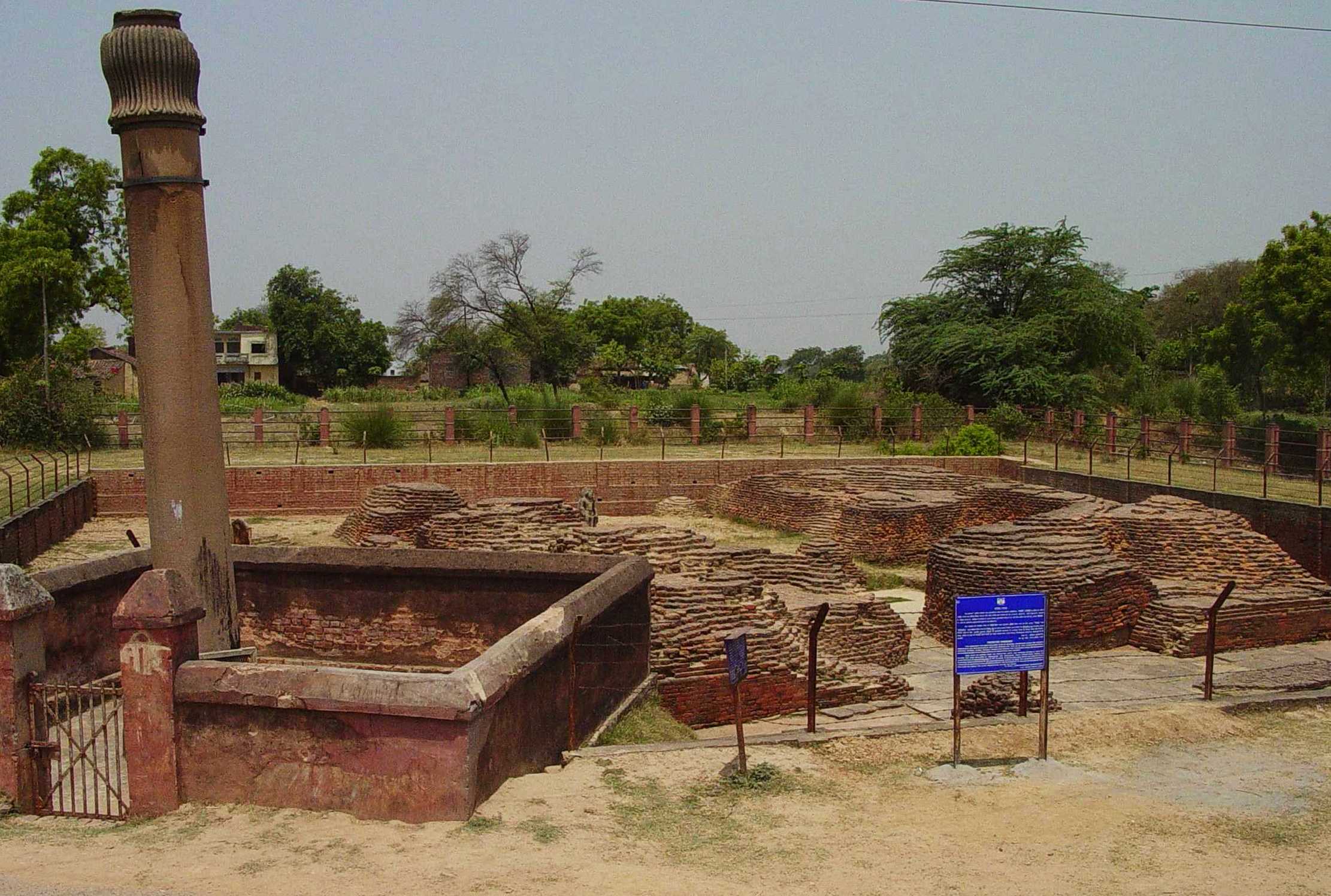Royal temples of Gupta period: excavations at Bhitari
Vidula Jayaswal
Jayaswal, Vidula;
Royal temples of Gupta period: excavations at Bhitari
Aryan Books International, 2001, 220 pages
ISBN 8173052077, 9788173052071
topics: | india-ancient | history | architecture | hinduism
detailed record of the excavation at bhitari, a temple complex from the
gupta period (c.460AD). the main vishnu temple bears an inscription in
sanskrit declaring it constructed by skandagupta (ruled 455-467AD),
who, possessing strength of arm most abundantly in the world, is the
one hero of Gupta lineage; whose splendour is as profuse as renowned,
who is Skandagupta by name... (verse 2)
- p.36 (tr. Bhandarkar 1981)
the inscription goes on to suggest some instability - possibly a succession
struggle - after the death of Kumaragupta:
by whom, as he was intent upon steadying the tottering sovereignty
of the house, several nights were spent on a bed, namely, the earth;
and, having in a battle vanquished enemies who had developed forces
and treasure, (his) left foot was placed on the royal
foot-stool. ... [verse 4)
who, with enemies conquered by the strenth of his arm, established
again the Sovereign of the House that had turned adrift when (his)
father had repaired to heaven... (verse 6) p.37
The mound at Bhitari had a sandstone pillar with the above inscription, and
this had been explored by Alexander Cunningham and his assistant Horne.
Though Horne felt these were of Buddhist origin, the presence of several
bricks stamped with the name of Sri Kumaragupta led Cunningham to suggest
that the complex belonged to the Gupta period.
further excavations were conducted by KK Sinha of the BHU Archaeology
department from 1968 to 1973, but little data is available of these
excavations except for two sketchy reports. First, a large wall, 1.2m wide and
19.9m long, was discovered near the pillar, running aligned to the base of
the pillar, and suggesting the presence of a temple. Later, the plinth was
discovered as an original square of 16.4m, one side of which was subsequently
extended to 24m. Some pre-gupta period walls were also discovered lying
below the plinth level. The earlier structure appeared to be terracotta, but
later constructions were of stone.
In Prof. Jayaswal's work (1995-), the rest of this temple (called Bhitari-2 or BTR-2)
was excavated. The book contains detailed stratigraphic diagrams and plinth
layouts of the temple structure.
 bhitari-2, one of the better excavated sites in the bhitari complex, as it
looks today.
bhitari-2, one of the better excavated sites in the bhitari complex, as it
looks today.
Contents
1 Introduction 1 2 Land and People 24 3 History of Archaeological investigations 32 4 Excavation of Temple no. 1 48 5 Excavation of Temple no. 2 81 6 Excavation of Temple no. 3 128 7 Excavation of residential areas 146 8 Summary and Deductions 202
kadalikakarana: indian corbelled architecture
domed roofs: kadalikakarana: i.e., the walls are built projecting inwards and leading to the top, to close the ceiling. [a method of corbelling, where successive layers are supported on the earlier one; unlike the true arch construction which is curved with a keystone at the top. ] Kadalikakarana: the sikhara was built generally by corbelling of courses of bricks overlapping each other inside, until they met and closed the opening with a stone or brick called Murthnestika. The outer faces of the brick sikhara were plastered with lime mortar and occasionally, decorated with stucco. Some sikharas were provided with sukanasis over the arthamandapas. - Reddy, E. Siva Nagi, Evolution of building technology in early andhradesa http://shodhganga.inflibnet.ac.in/handle/10603/1749 (phd thesis, U. Hyderabad, dec 1994, guide: Aloka Parasher-Sen]
amitabha mukerjee (mukerjee [at-symbol] gmail) 2012 Sep 21